Tidiness is an often discussed matter in the textile art world. Should knots be visible or used at all? Is it okay for stitches to be uneven? How closely should loose threads be trimmed? Raw or turned edge for appliqué?
Rosie James is a confident tidiness rule breaker, especially when it comes to hanging threads. And the end results give even the greatest stickler pause.
Rosie’s long hanging threads add meaning and texture that couldn’t be achieved otherwise. They clearly suggest movement in her scenes of daily living, especially in the hustle and bustle of crowds, which is a favourite subject of hers.
Rosie also uses screen printing and appliqué to create a sense of depth and reflection. And she loves exploring non-traditional materials like reflective fabrics and neon threads.
We’re thrilled to invite you into Rosie’s large-scale world. Neatness takes a back seat to some remarkable character development.
You may decide to set your scissors aside after seeing her work.
Fashion dabbling
Rosie James: One of my first memories of being exposed to textiles was my mum sewing on her treadle sewing machine. It was quite noisy! She made so many cushion covers and curtains for the house in fabulous 60s colours and prints. I can still picture them.
I was taught sewing at school, and I remember making an apron and a nightie. I wasn’t particularly good at it, though. Later, around age 17, my friend and I dabbled a bit in making our own clothes, which was fun.
When I left school, I studied to be a radiographer and worked all over the world for about 10 years. But all that time I was thinking about doing something else!
Eventually, I took a part-time course in fabric dyeing and printing, and I loved it. So, I decided to pursue a Bachelor of Arts degree in textiles at the Surrey Institute of Art and Design in Farnham. My programme was led by fabric printing design, particularly screen printing.
I then completed a Master of Arts at Goldsmiths in London, which was more art focused. This led to my becoming much more experimental and working on a large scale.


Free motion freedom
I started teaching fashion and textiles at a further education college in Kent (UK) after completing my master’s degree. That’s when I discovered all the possibilities for using a sewing machine to draw, especially when using photographs I could trace. I could also create photo collages to stitch, putting together all sorts of crazy surreal images.
“A whole new world opened up when I realised if I could photograph something, I could stitch it, too – and in any size!”
Rosie James, Textile artist
As I was learning free motion embroidery, I recreated a drawing by the German painter and printmaker Albrecht Dürer, one of the Renaissance masters, to compare the different kinds of lines I could make with the sewing machine. I especially loved the way the thread gave the lines a fuzzy and slightly hairy quality.
When drawing with a pencil, you can easily change the thickness of a line just by pressing harder. But with a sewing machine, it’s more difficult because you have to change to a thicker thread, which is a bit more work.
The sewing machine also likes to keep going in a continuous line, and it can get frustrating if you have to keep stopping and starting. Using the sewing machine is much less intuitive than drawing by hand because the machine is always in the way.
I first tried learning free motion stitching from a library book. I followed the instructions, but I couldn’t do it. The fabric kept getting sucked into the machine. So, I took a short course and eventually achieved success.
I also learned that some machines are better than others. The college had old Bernina sewing machines, so when I saw a similar secondhand one in the window of a local sewing machine shop, I bought it and off I went!
Today I use a newer version of that original Bernina machine. It’s basic and doesn’t do a load of fancy stitches. I also have an old green Bernina and a couple of Janome machines people have given me, all of which I use at some point. But I prefer the Bernina for free motion embroidery.

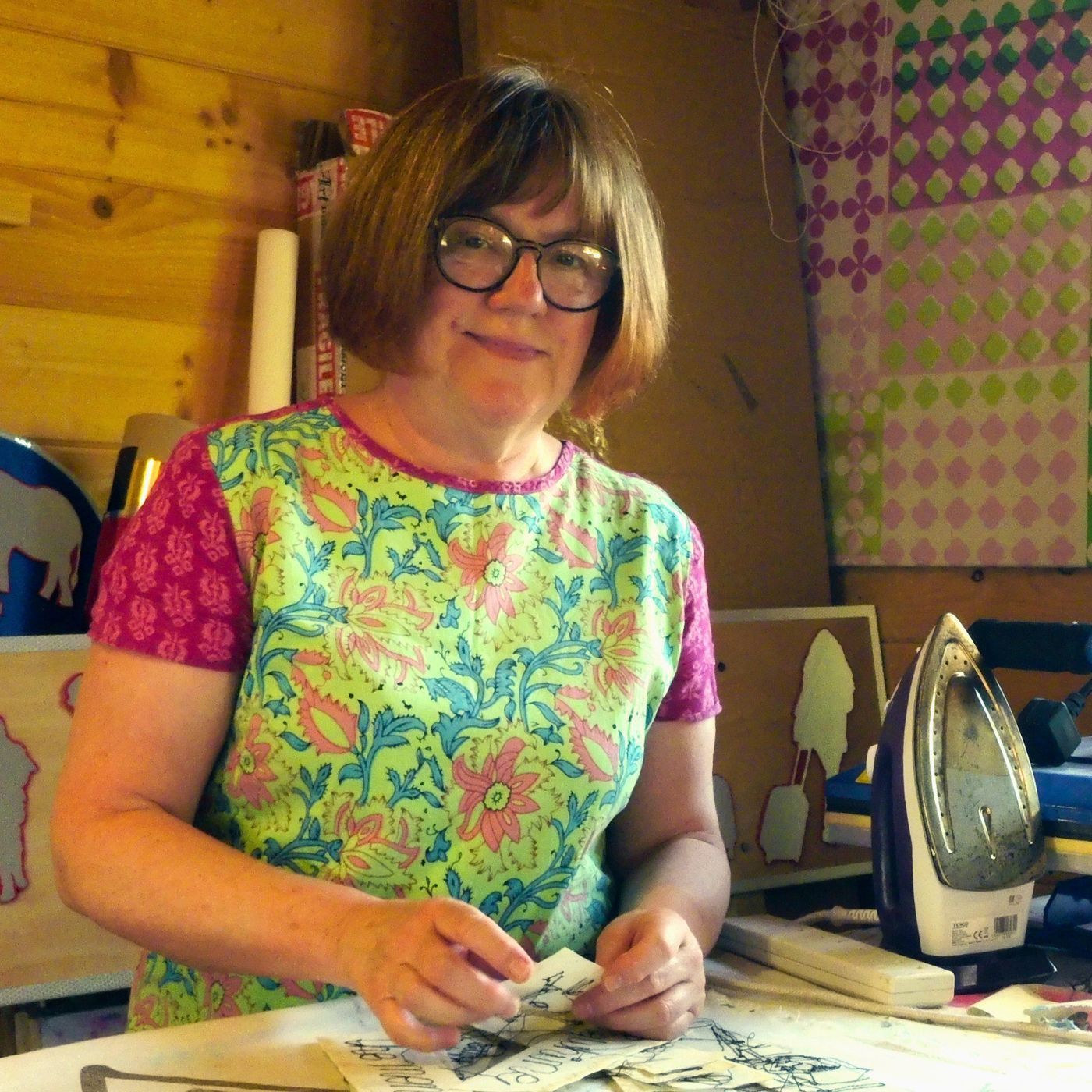
Public faces, public spaces
I love stitching pictures of people out and about. I prefer stitching complete strangers, as then I don’t have to worry about whether my work fully looks like them. I can also change things if I like.
I especially like figures that have interesting details, such as their clothing, what they’re carrying, or unique hairstyles, perhaps.
“I like people that have a lot of stuff going on, as the details are the things that reveal something about each individual within the crowd.”
Rosie James, Textile artist
Crowds are also intriguing. I take lots of photos of crowds and then I’ll pull people out of the crowd images to create a new group. I usually look for figures that are visible from head to toe.
I especially love crowded places where people travel. Train stations, airports, motorway service stations and the like always have different types of people from many different backgrounds brought together in a single space.
Kyoto station is a particular favourite. I’ve only been there once, but I was struck by the movement of large numbers of people all criss-crossing each other. They all seemed to know where they were going and never bumped into each other.
Paris Gare Du Nord station is another great spot for crowds. It’s amazing to see everyone accessing all the different underground lines.
It’s also interesting to interpret industrial, built-up areas using soft domestic textiles and threads. The juxtaposition presents the complete opposite of the subject matter.
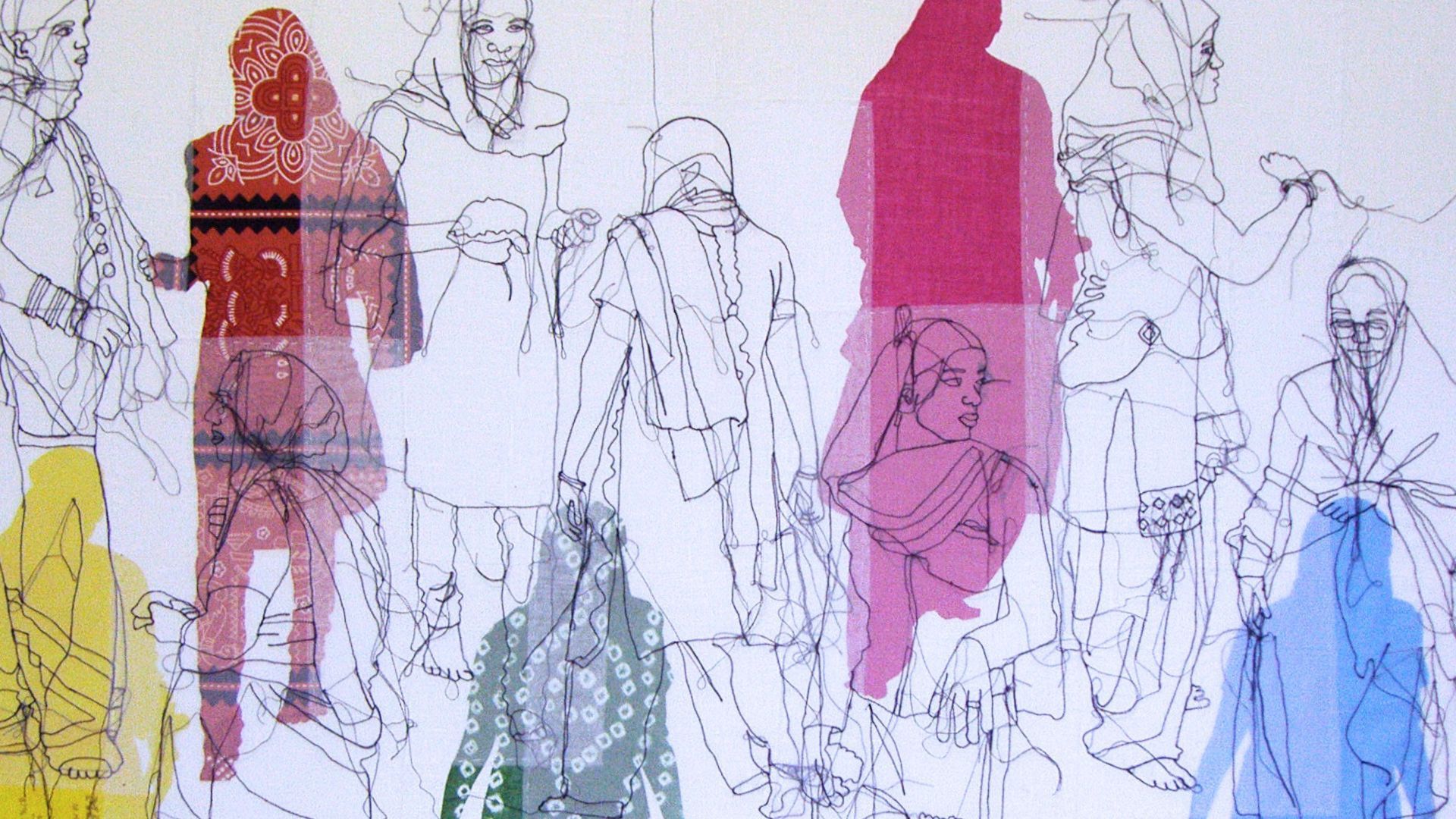
Creative process
I normally have an idea in my head and then just make it. If it starts going wrong, I just adapt along the way. That’s why the end result may not be what I originally imagined, but it might be even better.
After I choose a photograph, I print it in the size I want. I then fiddle with it by drawing over it, tracing it, deleting bits or adding bits, until I think it will work. I use Photoshop and set the size file to whatever I need.
I can create a life-sized image in Photoshop, but to print it out, I usually divide the image into lots of A4 sections that I print at home and then tape together. I recently printed a piece that was about six metres long, on which each figure was about three metres high.
I then add fabrics, some of which I may screen print. I use textile printing inks for screen printing, and I usually do the printing first and leave space for stitching if needed. I use Vliesofix Bondaweb (an iron-on paper backed adhesive) to apply the fabrics to the background.
I also love using photo transfer paper for fabric. I can print an image using an inkjet printer and then iron it onto fabric or use a heat press. It’s a great way to add little photographic elements to a work.
I work in a large wooden shed that I love dearly. One half is devoted to printing and the other for sewing. I like to listen to the radio or play music, but I don’t have a set routine. It mostly depends on what I’m working on at any one time.
“It’s not unusual for me to sometimes abandon a work at some stage if it’s not right.
I throw it onto a pile to be rediscovered later!”
Rosie James, Textile artist

Hanging by a thread
Hanging threads has become somewhat of a signature in my textile art. I remember the first time I used the technique. I had originally intended to cut off all the threads, but I liked how they looked, so I left them in place. I did cut them all off once, but I felt the resulting work was flat and lifeless.
In earlier works, the threads were gushing out of the figures’ eyes!
I also think that if I cut all the threads, the work just looks like an ink drawing created with a pen. The threads make it clear the piece is stitched. They add scribble and movement, and I love how they dangle off the edge of a canvas like dripping paint.
There is so much to be explored with loose threads. I love the work of Nike Schroeder, who has gone from drawing figures with loose threads to pulling the threads down and off to one side of the canvas. Her work is now all about the loose threads, and she creates great sweeping works of loose threads in graduated colours.
“It’s interesting how the threads have evolved since my first drawing.
They’ve gotten longer and longer over the years, but I’ve started trimming them a bit so viewers can see more of the faces.”
Rosie James, Textile artist
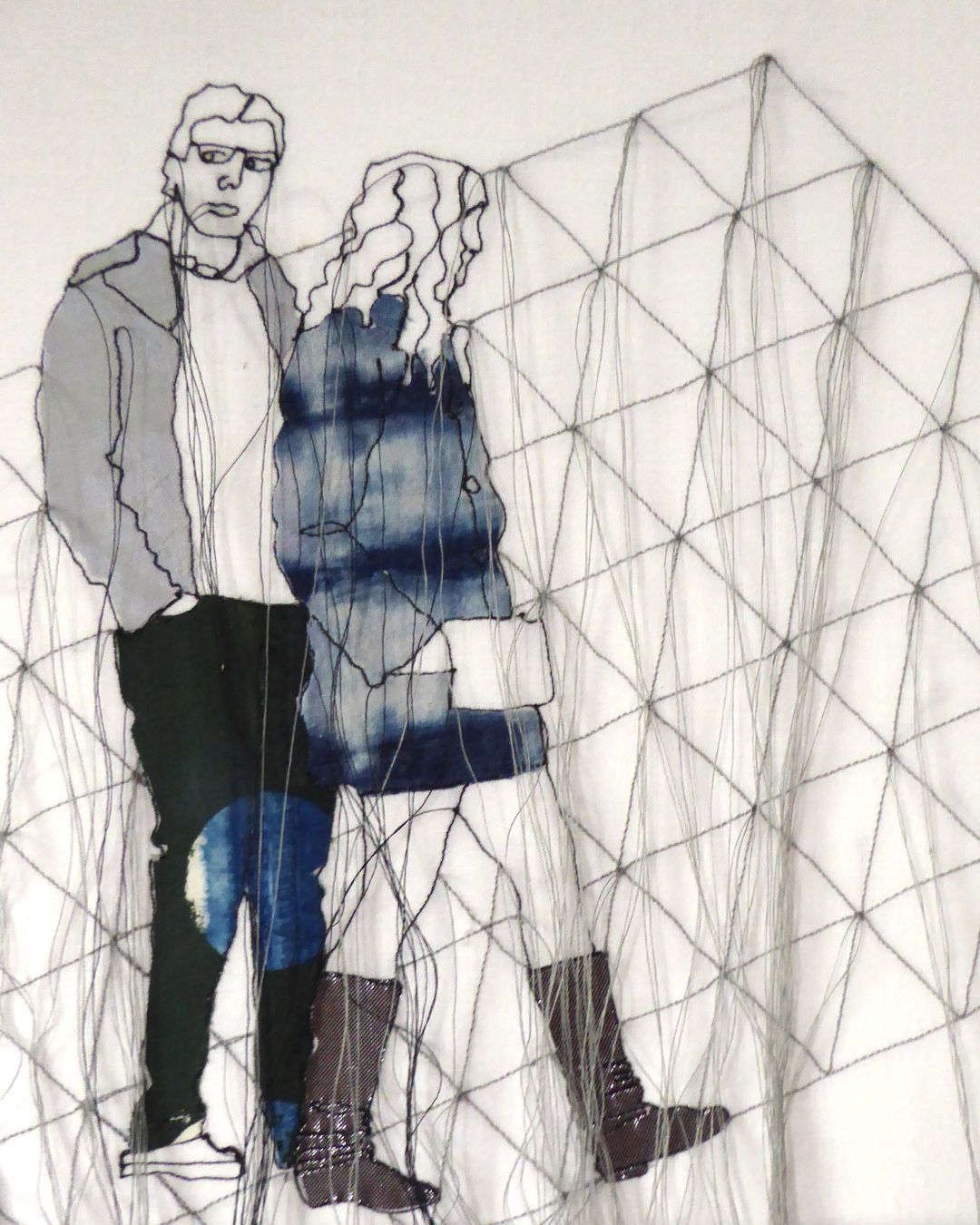
Sheer magic
I love using transparent fabrics because they’re great for layering on top of printed fabrics or other stitched pieces. I use tissue paper to make these fabrics easier to stitch on, and I always use a hoop.
I particularly like silk organza and cotton organdie, but I also use a lot of polyester voile, which is more affordable. I’ll even stitch on netting, which is mostly holes!
My appliquéd fabrics are all recycled. Many people give me their old fabrics and others I acquire elsewhere. I do like making clothes, so I also have scraps left over from those projects.
My colour palettes are fairly random. They might be based on a particular bit of fabric or use a different coloured thread instead of my normal black thread. I might also create a palette based on screen printing I’ve done.
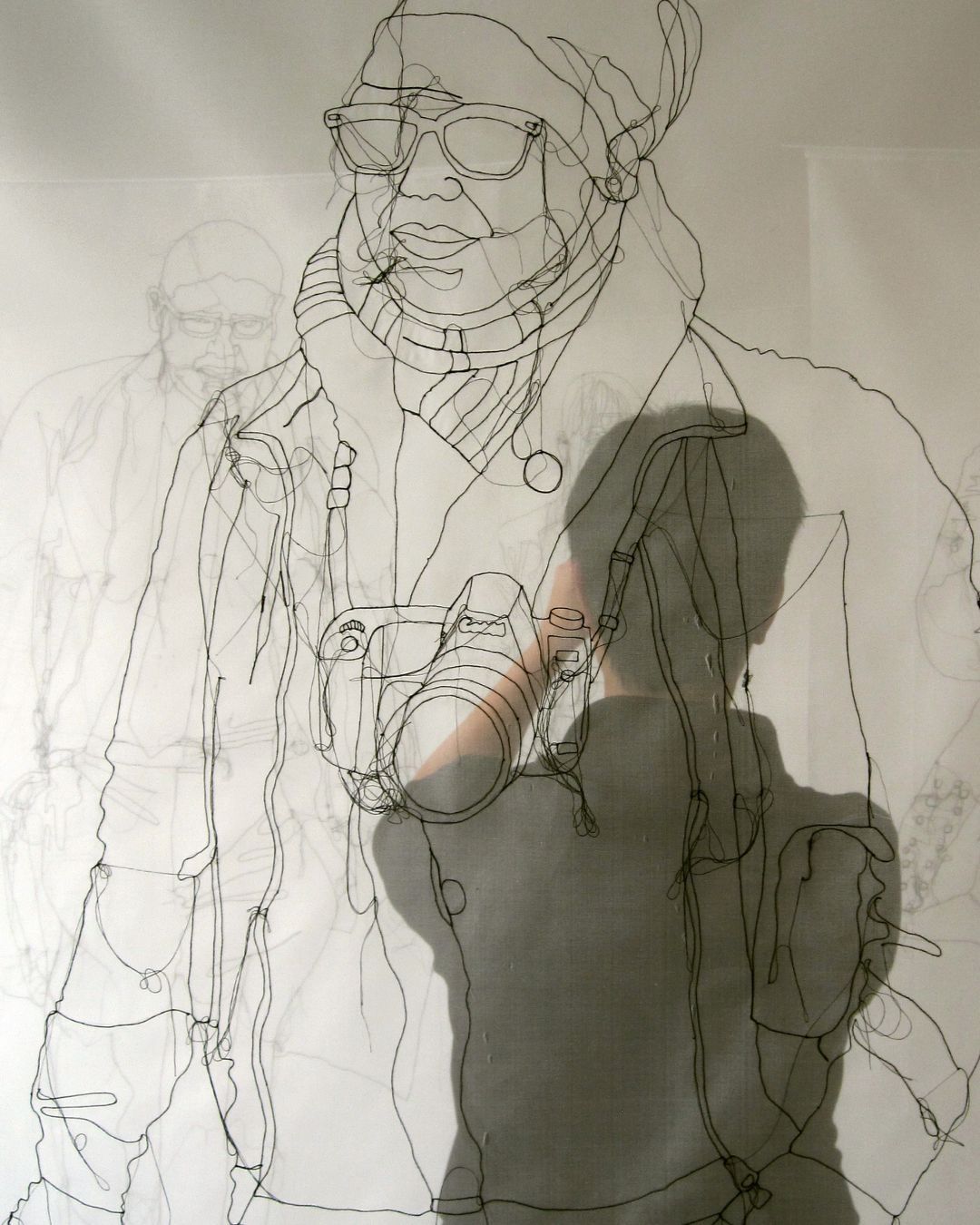
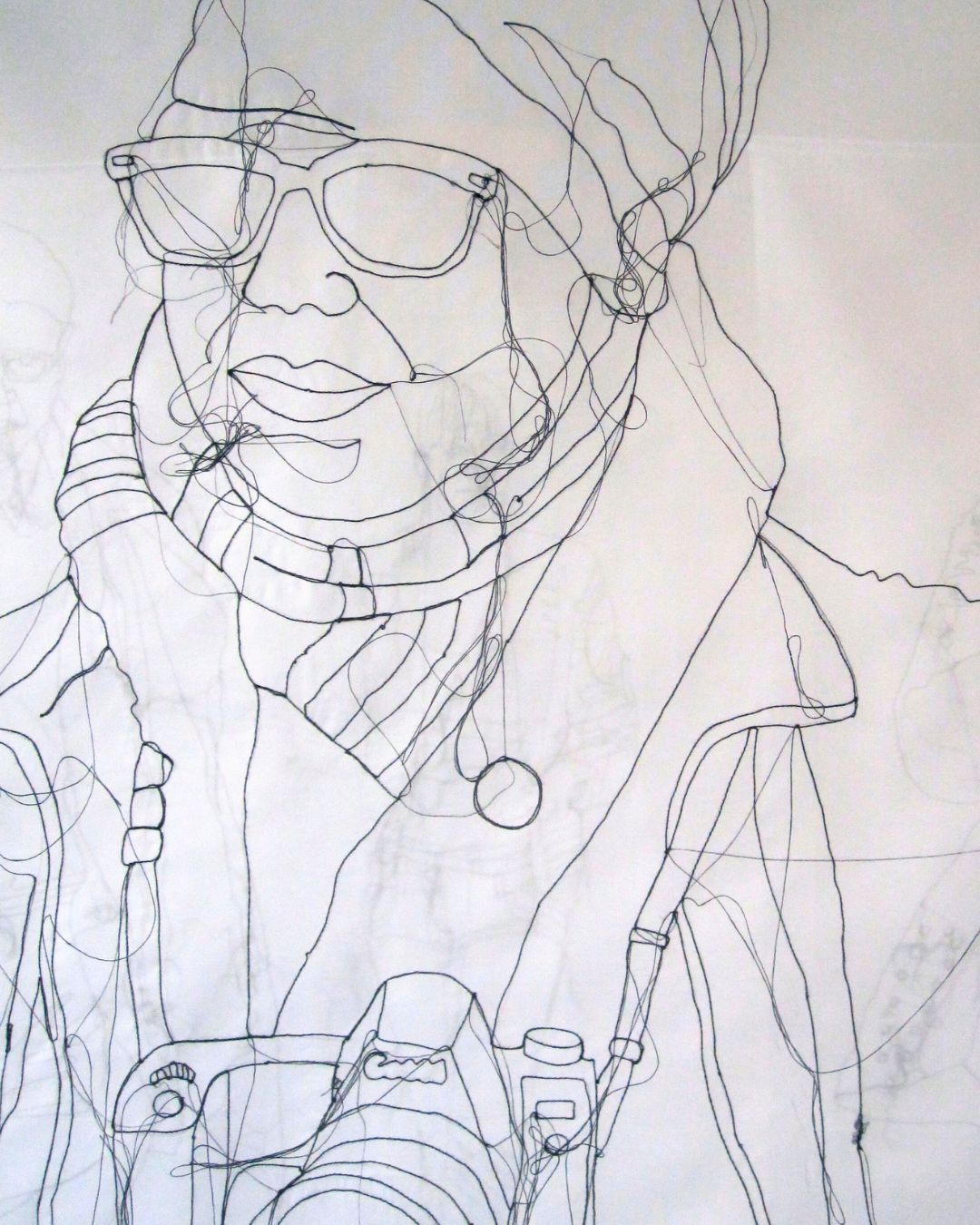
Crowd Cloud
Crowd Cloud features an actual crowd of 20 different stitched figures. All were taken from photos of people approaching the London Bridge tube station on their way home from work at rush hour.
They are hung together as a cluster, and viewers can walk around the figures and literally become part of the crowd. Viewers are also able to see through the figures to create an additional sense of being in a crowd.
Crowd Cloud has been exhibited all over the world, usually in small groups of about 10. Only once have all 20 been displayed together.

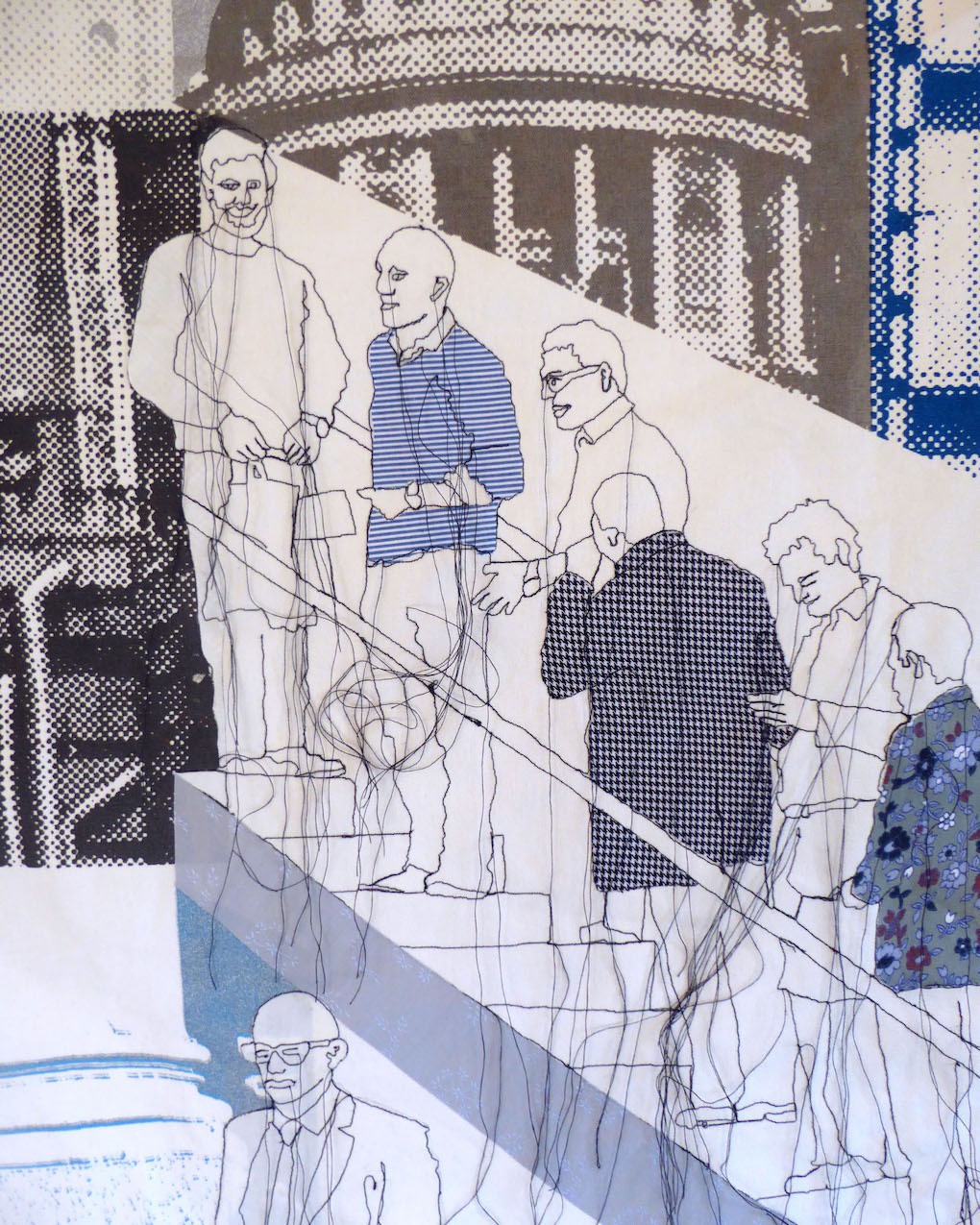

Combining stitch & print
The figures in All the People Some of the Time are taken from photographs of people shopping in my local town. The work is both screen printed and stitched.
I stitched the same people that I had also drawn and printed. The figures were stitched onto transparent fabric, which was then hand stitched onto the screen-printed background using a red running stitch. I wanted to build up a crowd using both stitch and print.
In my earlier works, I only used stitch and no printing. But I love screen printing and was very keen to get back into it. So, I decided to use it to add buildings in the background and kept stitching for the figures.
I’ve moved on from that now, and do sometimes also stitch the buildings. But I still like the contrast between a printed line and a stitched line.


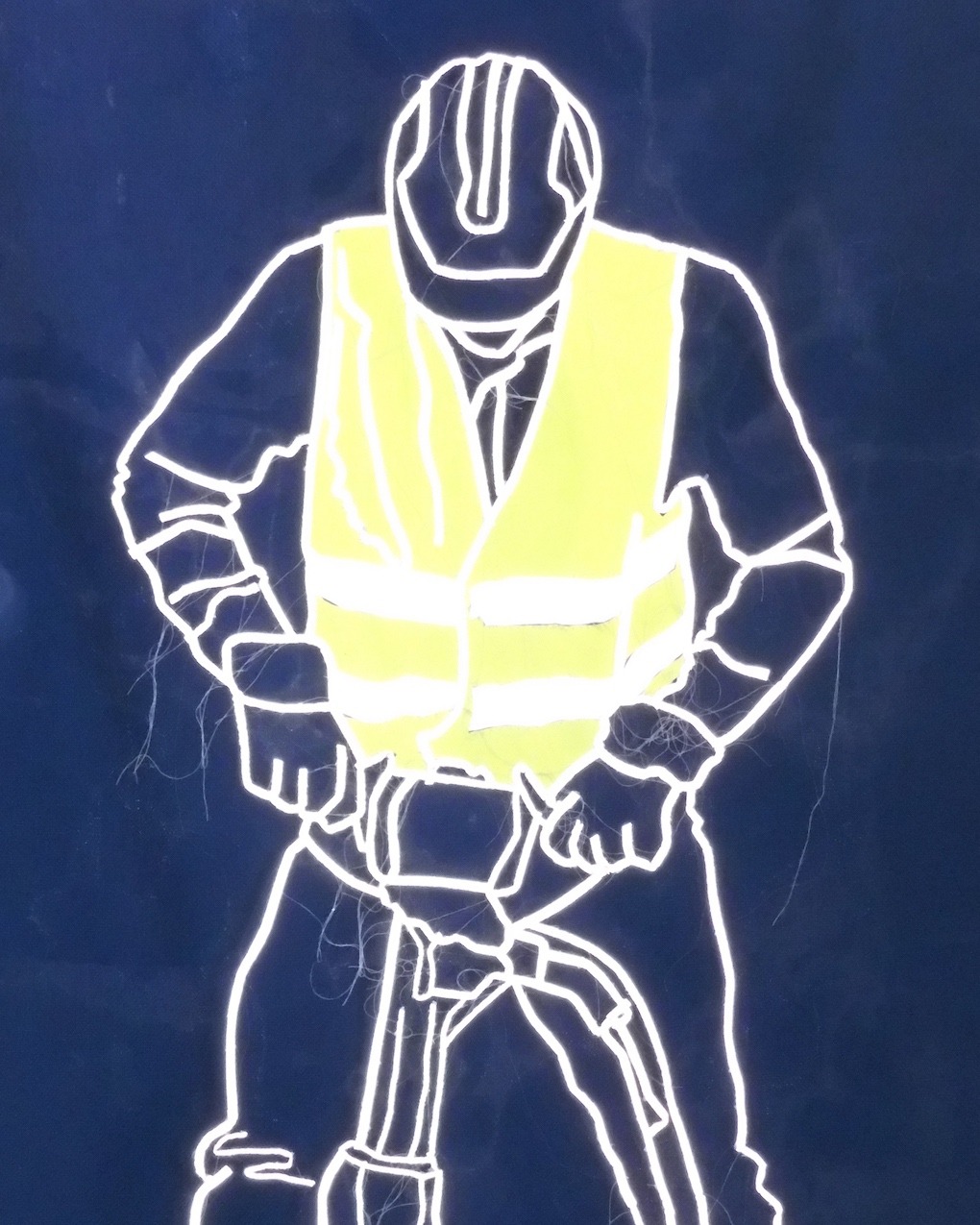
Reflective stitching… literally
I’m a member of a small group of artists called the Filaments Art Collective. We put on large-scale installations, each of us doing our own thing towards the whole.
We chose to exhibit in an unused church near where I live, in the winter of 2022. The church only had a few pews and a small altar which made it a perfect place for our imaginations to run riot.
Also, because winter is a dark and cold time of year, we wanted to create things that would light up or otherwise show up in the dark, so I searched for reflective materials. I also discovered reflective thread. It didn’t fit through a needle, so I put it in the bobbin to sew, making the back of the work become the front.
“I explored using reflective fabric, as I’m always interested in stitching on different kinds of materials.”
Rosie James, Textile artist
The reflective fabric is the same that’s used for protective clothing, and it lights up when car headlights hit it. The stitching was also revealed when a flash photo was taken. I was able to use a torch to light it up, but the stitching was only visible if I was standing at the right angle.
I’m continuing to explore this process after discovering some high-visibility garments by the side of the road near my home. Using photos of the city at night for reference, I’m experimenting with high-visibility and reflective fabrics, as well as neon threads and fabrics.

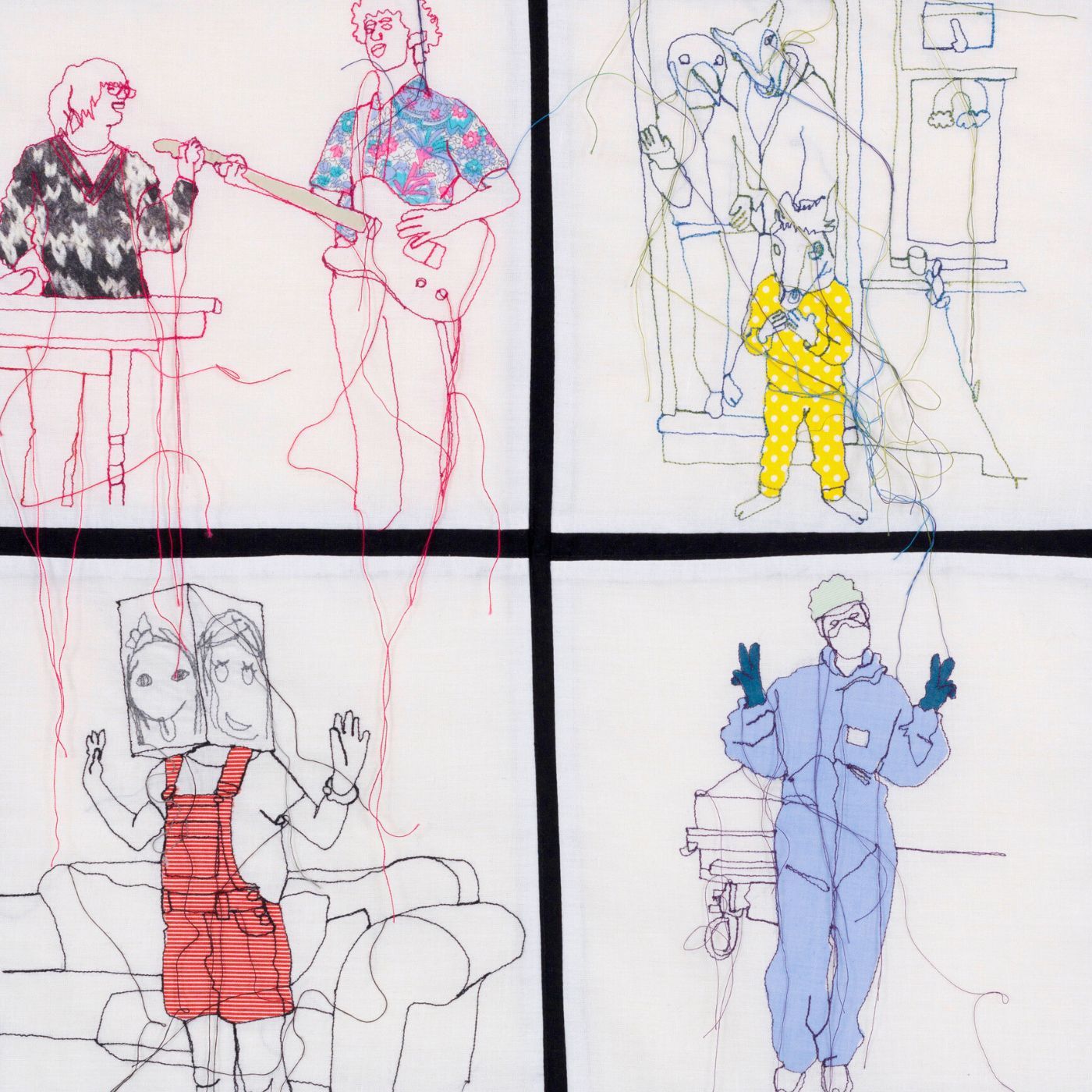
Favourite work
I love many of my artworks and the memories of their making, but my favourite is Waiting for the Meeting to Start. I made it during the Covid lockdowns in April/May 2020.
I was looking for something to do while stuck at home, so I posted a request on Instagram asking people to send me pictures of themselves at home. I received so many responses and eventually had to stop at 100!
I made a stitched drawing of each photo and posted it on Instagram. Each piece was 20cm (8″) square. After stitching 100 portraits, I sewed them all together to make two large panels of 50 squares each.
Each square had a black frame around it, and I put myself in the middle with a lime green frame around my square. It was meant to look like a Zoom meeting, with me talking, hence, my portrait having a green-edged frame.
It was first exhibited in the windows of the Intra Arts gallery in Rochester, Kent. That was great, as we still couldn’t mingle with other people due to the pandemic. It was later shown at The Festival of Quilts and The Knitting and Stitching Shows, so lots of people got to see it in person.


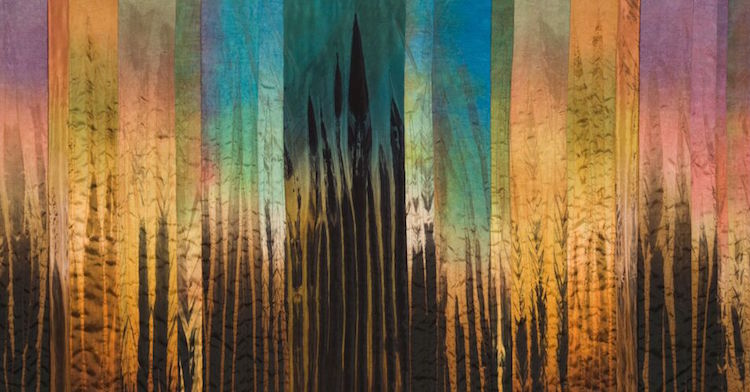
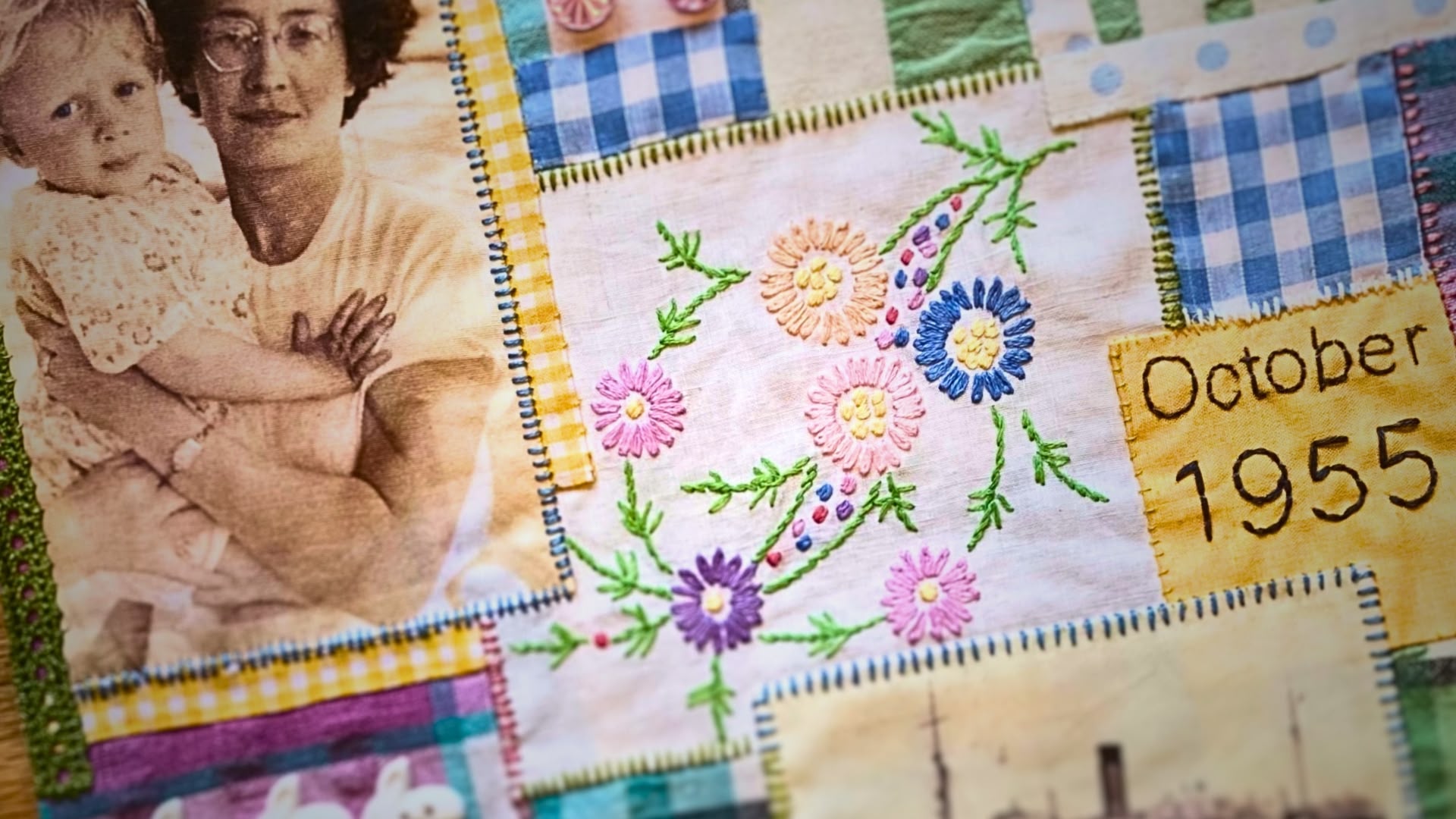
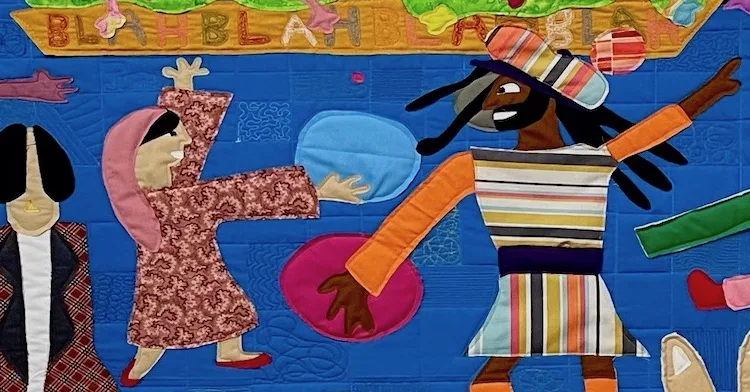
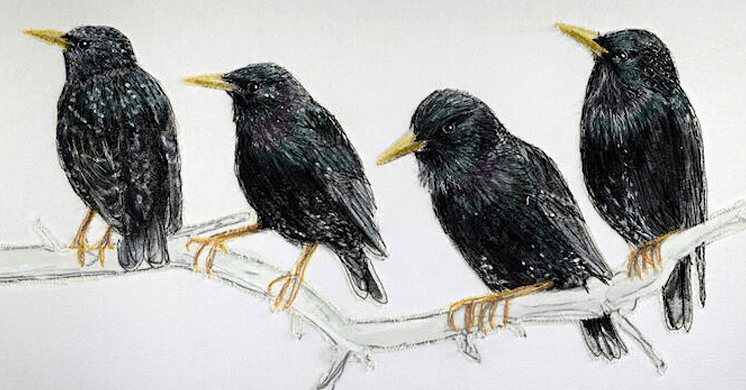
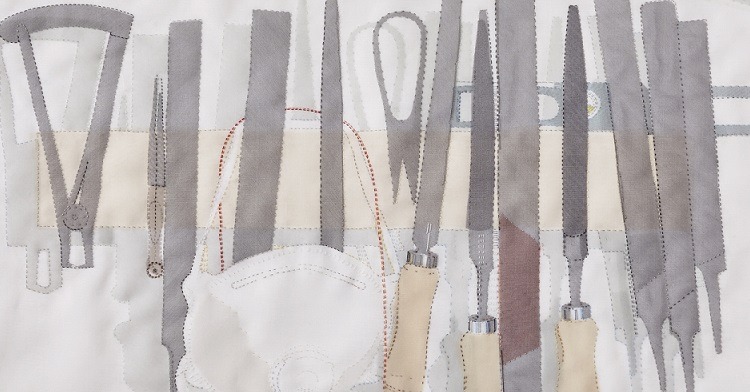
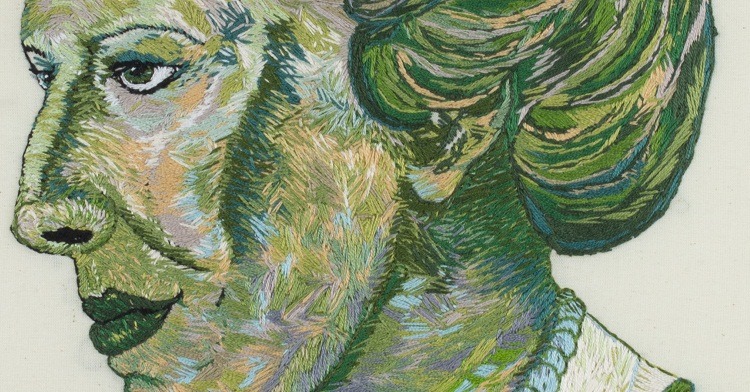
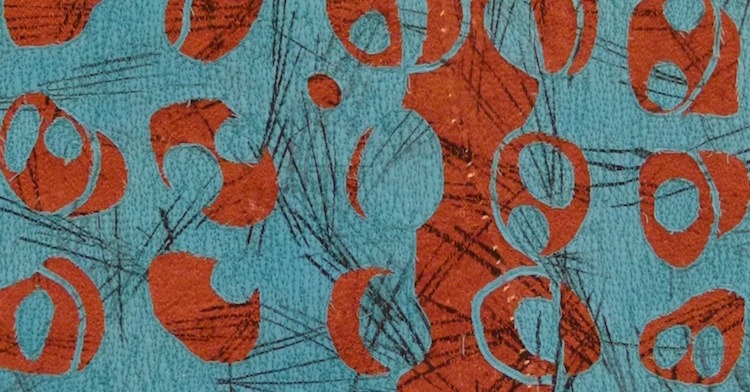
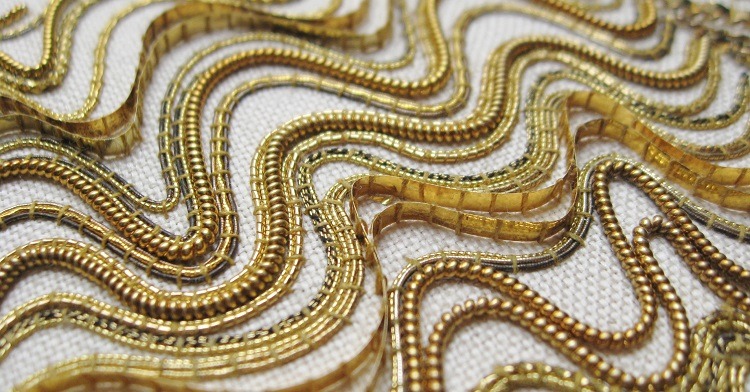
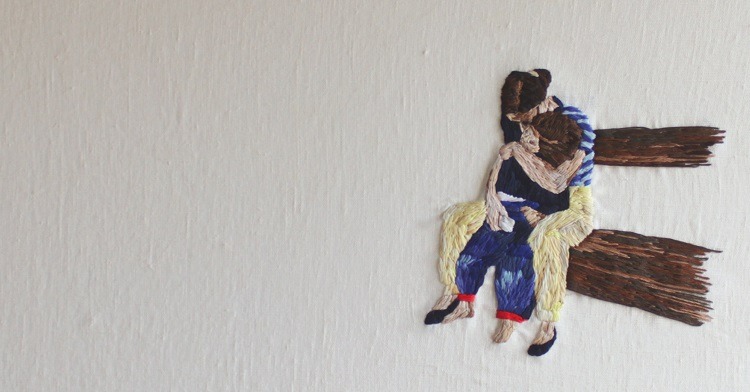
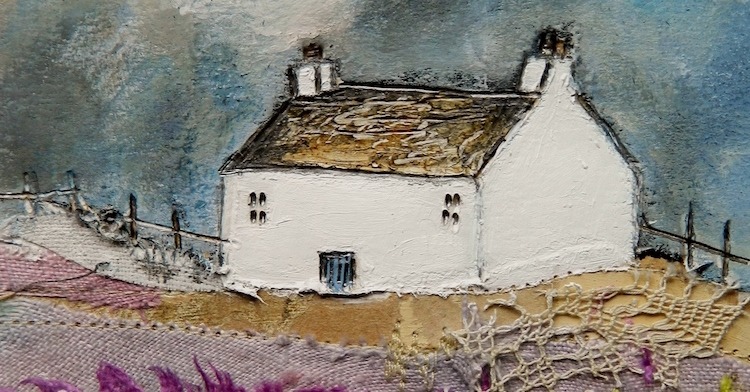
7 comments
Talib Bridge
Love it! So creative and such great inspiration for all artists alike!❤️❤️
Gail Mercer
I have found reading about your artwork and your process . You are so generous with your experience and knowledge .
Rita chohan
The most inspiring artist and teacher I have come across . I was totally blown away and wish others would teach like this . She was so generous with knowledge and in depth teaching . I was so privileged to attend her class today 🥰
Siân Goff
We are so glad that you enjoyed Rosie’s article, Rita. We agree that she is a very special and generous teacher. Thank you for your comment.
Susan Adamek
I will definitely try leaving dangling threads. I have always been one to cut them away. Not now!
Rosie James
Its worth a try Susan! you can always cut them off if you don’t like them.
Siân Goff
We are so glad that you enjoyed Rosie’s article, Rita. We agree that she is a very special and generous teacher. Thank you for your comment.